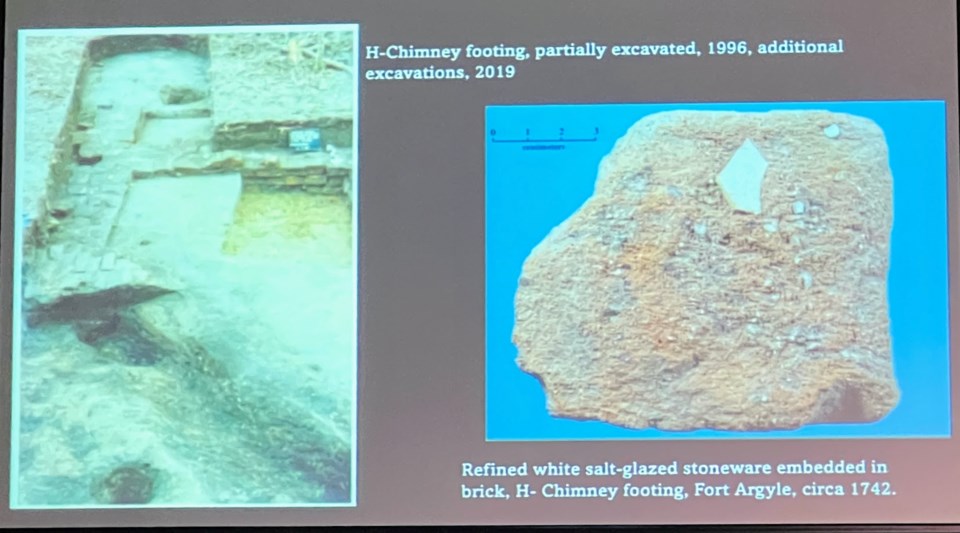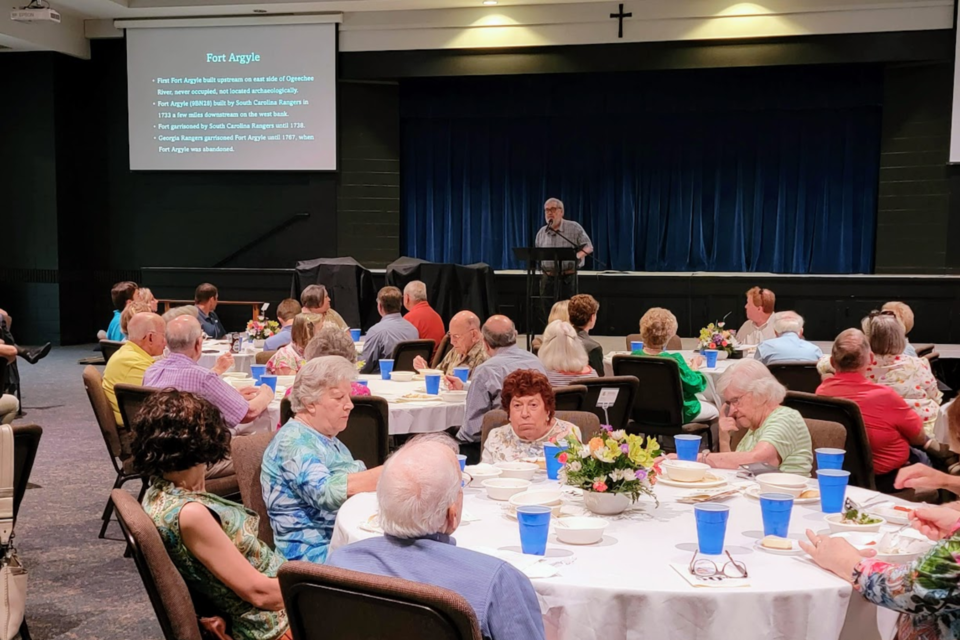The 50th annual meeting of the Bulloch County Historical Society (BCHS) earlier this week definitely surpassed expectations. Dr. Brent Tharp, Vice President of BCHS, introduced the program, Rediscovering Fort Argyle, and the presenter, Daniel (Dan) T. Elliott.
About 70+ members and guests were in attendance to listen to the detailed and informative history about Fort Argyle ‘Past and Present,’ which was abandoned and never used since 1767.
Elliott, a historical and archaeological researcher, author or co-author, presenter, and president of the LAMAR Institute Inc., holds an affiliate graduate faculty status at Georgia Southern University and is presently semi-retired. Elliott began with enthusiasm, passion, and a question: Are you familiar with Fort Argyle?
For those who are not, here is the history. Fort Argyle remains are located in Bryan County, on Georgia Highway 144 West of US 17 in Fort Stewart on the West Bank of the Ogeechee River. It was believed to be one of the earliest forts constructed in the new colony of Georgia. Archaeological research identified the locations of 3 Fort Argyles.

The first was built in 1734, the second in 1742, and the third in the 1750’s. Historically, documentation indicates that Fort Argyle was occupied sporadically and was renovated on several occasions between 1733 and 1788.
The fort was named in honor of John, Duke of Argyle, friend and patron of James Edward Oglethorpe and was garrisoned by Captain McPherson with a detachment of Rangers. Built by the South Carolina Rangers in 1733 until 1738, Georgia Rangers garrisoned the fort until 1776, when Fort Argyle was abandoned.
Strategically located on the West Bank of the Ogeechee River, it gave protection to the settlers of Savannah from anticipated raids. Fort Argyle's location on the Georgia coastline experienced catastrophic weather events like flooding, tropical storms, and strong hurricanes.

While researchers have pinpointed the general vicinity of Fort Argyle, its exact location remains unknown. Fort ruins or remains were discovered and recorded in 1985 by a team of archaeologists led by Chad Braley. There was a large excavation in 1996 by the Lamar Institute and even larger excavations in 2018-2019 by LG 2 Environmental Solutions.
Archaeologists with the Lamar Institute, including Elliot, conducted excavations at Fort Argyle and its surrounding environment from January-March 1996, part of the ‘Legacy’ project administered by Fort Stewart.
This team surveyed 150 acres surrounding the fort and uncovered artifacts of three decades of living. Their finds most surprisingly were lacking in 18th century trash and had evidence of years of farming on the site.
But what kind of artifacts? What types of work weapons were used? What were their building materials? These are just a few questions that are yet to be answered and solved. How fascinating!!
Historical research brings the people at Fort Argyle to life and provides a better understanding of colonial Georgia, the Rangers and the diversity of society, and life at a frontier fort in the earliest days of Georgia's interior coastal plain.
Elliot’s booklet on Fort Argyle may pique your curiosity even more.
‘A Touch of Class’ catered and served a delicious buffet of tossed salad, roast beef with gravy, mashed potatoes, glazed carrots, yeast rolls with butter, peach cobbler and cheesecake, and assorted beverages. Always delicious!
Keep Bulloch History Alive | Become a member of the Bulloch County Historical Society today!
Click here to learn more about membership opportunities.
3 WAYS TO JOIN
1. Download and Mail
Join the “historic way” click here to download, print, and mail a form.
2. Attend a meeting!
A membership table is always available for those who wish to join!
BCHS meetings are open to the public. They are held on the 4th Monday of the month, January through November. Please check our calendar for details.
3. Email our membership chairperson
Click here to send an email!




